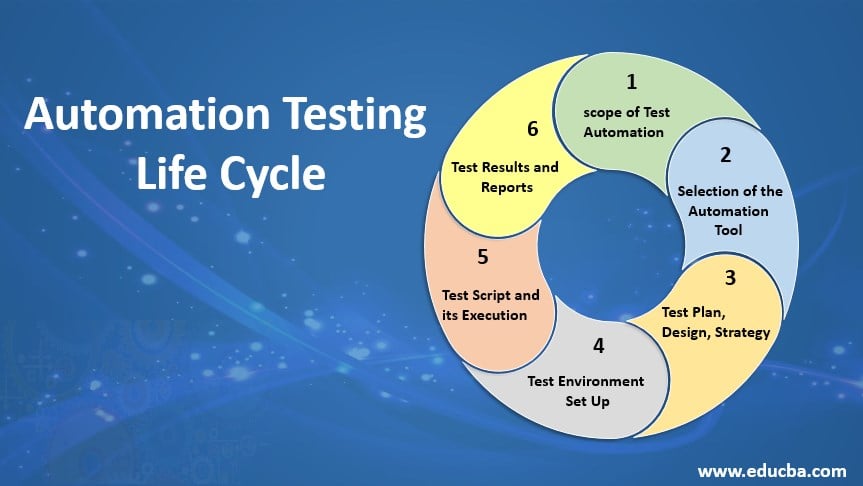Automation Testing Frameworks: Simplifying Complex Testing Scenarios
Automation Testing Frameworks: Simplifying Complex Testing Scenarios
Blog Article
From Guidebook to Automated Screening: A Comprehensive Guide to Transitioning Smoothly and Properly
In the world of software application testing, the shift from guidebook to automated processes has actually ended up being an increasingly crucial shift for organizations seeking to enhance effectiveness and accuracy in their screening practices. The trip from manual to automated screening is not without its challenges, however when approached purposefully and with a clear strategy in mind, the advantages can be substantial.
Advantages of Automated Testing
Automated screening provides many benefits, improving performance and accuracy in software advancement procedures. One main advantage is the significant decrease in testing time. Automated examinations can be run concurrently on multiple gadgets and running systems, substantially speeding up the screening stage compared to hands-on testing. This boosted performance allows for faster comments on the top quality of the software, allowing programmers to identify and deal with problems promptly.
Moreover, automated screening makes sure a higher level of precision in finding flaws. Uniformity in screening is also improved, as automated examinations carry out the exact same steps specifically each time they are run.
Choosing the Right Tools

Firstly, evaluate your demands and objectives. Understand the scope of your project, the innovations included, and the skill set of your group. This evaluation will certainly assist you determine the attributes and capacities you require in your testing devices.
Second of all, take into consideration the compatibility of the tools with your existing processes and systems. Seamless integration with your current software development lifecycle is vital to make certain a smooth shift to automation.
Furthermore, examine the scalability and adaptability of the tools. As your screening requires advance, the devices should have the ability to adapt and accommodate adjustments successfully.
Finally, factor in the assistance and neighborhood around the devices. When carrying out automated testing, durable support and an active user neighborhood can offer useful sources and aid. By thoroughly thinking about these facets, you can select the right devices that line up with your requirements and established the phase for a successful shift to automated testing.
Writing Efficient Examination Manuscripts

When crafting test manuscripts, it is vital to consider the details demands of the software being examined and ensure that the manuscripts attend to all essential capabilities. Clear and detailed calling conventions for test scripts and examination cases can boost readability and maintainability. Additionally, integrating error handling devices within the test scripts can aid in identifying and resolving issues immediately.
Furthermore, organizing examination manuscripts into modular elements can boost reusability and scalability, minimizing redundancy and enhancing effectiveness in examination manuscript maintenance. Routine testimonials and updates to test scripts are critical to keep pace with progressing software program demands and capabilities. By following these concepts, visit this page testers can develop robust and effective examination scripts that contribute substantially to the success of automated screening procedures.
Integrating Automation Into Workflows
By effortlessly integrating automated screening tools like Selenium or Appium right into the software growth lifecycle, teams can achieve faster comments on code changes, leading to quicker insect detection and resolution. This assimilation allows for continual testing throughout the growth process, making certain that any type of issues are recognized early on, resulting in higher software program quality. Correct integration of automation devices requires cooperation between advancement, screening, and operations groups to establish a unified process that maximizes performance and effectiveness in providing top quality software application items.
Guaranteeing a Smooth Shift
Successfully transitioning to automated testing entails meticulous planning and mindful implementation to lessen interruptions and make best use of performance in the software program growth procedure - automation testing. To ensure a smooth shift, it is crucial to start by conducting a complete analysis of the present screening procedures and recognizing locations where automation can bring one of the most substantial advantages. Involving with all stakeholders early on in the process, including developers, testers, and project managers, is essential for gathering support and buy-in for the automation effort
Communication is essential during this transition stage. Clear interaction of the objectives, advantages, and assumptions of automated testing assists to handle any type of resistance or issues that may arise. over here Additionally, providing ample training and sources for group participants to upskill in automation tools and techniques is important for making certain an effective shift.

Conclusion
Finally, transitioning from handbook to automated testing uses countless advantages, consisting of increased efficiency and dependability. By picking the ideal devices, creating reliable examination manuscripts, and integrating automation seamlessly into workflows, organizations can guarantee a smooth and successful shift. It is crucial to welcome automation as an important possession in software application screening processes to enhance general high quality and productivity.
In the realm of software screening, the change from guidebook to automated procedures has actually come to be a significantly vital transition for organizations seeking to enhance effectiveness visit this website and accuracy in their testing practices. Automated examinations can be run concurrently on multiple tools and operating systems, dramatically speeding up the testing stage contrasted to hand-operated testing. Consistency in screening is likewise enhanced, as automated examinations execute the exact same actions exactly each time they are run.To ensure the effective implementation of chosen screening tools, the production of efficient examination manuscripts plays an important duty in confirming the capability and performance of automated processes - automation testing. By following these principles, testers can create effective and durable test manuscripts that contribute significantly to the success of automated screening procedures
Report this page